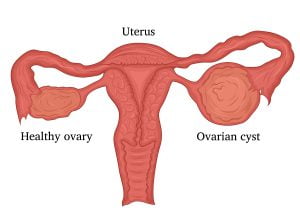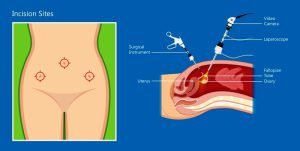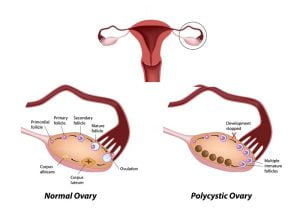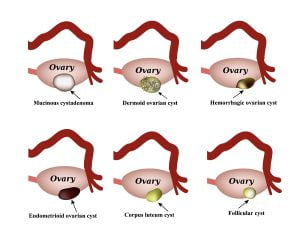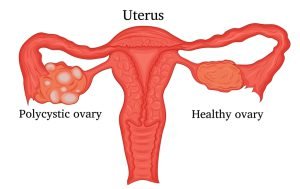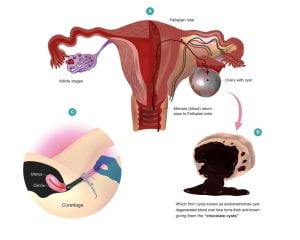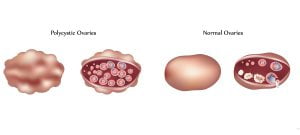Browsing: Ovarian Cyst Graphics
Comprehensive Information, Resources, and Support on Ovarian Cyst
Many women have ovarian cysts at some time. Most are harmless, but some can cause serious symptoms. An ovarian cyst is a fluid-filled sac within the ovary.
Ovaries produce eggs and release the hormones – estrogen and progesterone. Endometriosis can also lead to the formation of ovarian cysts which can cause infertility. To treat ovarian cysts, a commonly used approach is laparoscopic hysterectomy. Laparoscopic hysterectomy is a minimally invasive surgical procedure in which a laparoscope (small, tube-shaped microscope with a light on the end) is passed into the abdomen to visualize the internal organs and then the cysts are removed through the small cuts made in the skin. It is a less painful procedure and has a quicker recovery time.
Polycystic ovary syndrome (PCOS) is a condition that disturbs a woman’s hormone levels. Women with PCOS produce higher-than-normal amounts of male hormones. This imbalance can cause them to skip menstrual cycles and problems to get pregnant. It is a common problem, and 1 out of 10 women has PCOS. Symptoms include changes to the menstrual cycle and excess hair growth.
There are several types of ovarian cysts, such as, follicular cysts, chocolate cysts, dermoid cysts, and cysts due to polycystic ovary syndrome (PCOS). Most ovarian cysts are diagnosed with ultrasound or physical examination. Transvaginal ultrasound is a common way to examine them.
Women have two ovaries that are responsible for producing eggs as well as certain hormones called estrogen and progesterone. Sometimes, a fluid-filled sac develops on the ovaries. These are called ovarian cysts. Cysts are very common, many women develop at least one cyst during their lifetime. In most cases, cysts are painless and cause no symptoms or mild symptoms.
Endometriosis occurs when the tissue that lines the uterus, also known as endometrium, grows on other pelvic organs, such as the ovaries or fallopian tubes and bowel. This process is called endometriosis. The tissue gets to the ovaries and forms a cyst (or lump). This leads to the formation of endometrial ovarian cysts. When the menstruating blood is trapped as a cyst, it thickens and becomes brown with time and so these cysts are known as chocolate cysts. These ovarian cysts are enlargements of the ovary that appear to be filled with blood. Common symptoms of ovarian endometriosis are pain in the lower abdomen before and during menstruation, cramps, heavy menstrual bleeding, infertility, pain after sexual intercourse, discomfort with bowel movements, etc.
Polycystic ovary syndrome (PCOS) is a set of symptoms due to elevated androgens (male hormones) in females.
ADVERTISEMENT




